How ChatGPT helped me make a Product Onboarding Flow
A step by step walkthrough of the prompts used.
Well, hasn’t AI taken off this year?
Ever since ChatGPT exploded onto the tech scene late last year, several product professionals like me have been exploring how it can be leveraged as an assistant to fast-track certain operational workflows.
Last week, I gave myself a task to ideate and model an onboarding flow for a product and dig deeper into how ChatGPT could be used as a sidekick.
But before I go into the step-by-step breakdown, there are a few things I want to state here based on the feedback I received on the previous document I published (45 ways to use ChatGPT as a PM):
“ChatGPT is overrated”
Several product experts remain skeptical of the AI tool. Their objection is based on the fact that without a deep understanding of customers and their pain points, ChatGPT will issue generic, potentially misguided responses.
Firstly, it’s true. ChatGPT has no clue about your customers. But that’s a given. A tool is only as good as how you wield it. Anyone attempting to use ChatGPT to get perfect, readymade answers is simply going the wrong way about it.
Secondly, while it’s vanilla form knows very little about your scenario, you can train the model to understand a bit more about your customers. By building a conversation, you can make it adjust and tweak its responses. No, I’m not saying that those responses will be 100% accurate, but they will get better the more you invest in the prompt.“ChatGPT won’t replace product managers.”
Of course. Building a product involves components that machines will struggle with like stakeholder management, empathetic customer discovery & driving a “human” team. The idea is to use it as an assistant, not as a driving force.“ChatGPT gives imperfect responses”
Yes, it does. In many cases, I’ve run into cyclical roadblocks. Sometimes, ChatGPT keeps regurgitating variation of the same myopic response. This is especially true when you take it down a path that’s less travelled e.g. a subject that got heavily expanded on after 2021.
Alright then. Without further ado, let’s get into it.
Warning: this is a pretty long post for an email, so you might have to jump on my web page if the email gets truncated (aatir.substack.com).
Step by Step process of using ChatGPT to help with an onboarding flow
I started off with an initial prompt where I described what I was working on. You have to feed it some context. ChatGPT will acknowledge that and give you some unsolicited advice based on your goal :)
The Prompt
First, know this: I'm a Product Manager for a SaaS product that helps freelancers manage revenue collection.
It specifically helps them to generate branded invoices for their projects, create payment links that integrate with their Paypal / Stripe account & track revenue over time.
At the moment, I'm promoting the product on Product Hunt. 100 people have signed up for a 14-day free trial.
Next, I revealed my intentions. I shared the endeavor we were going to embark on. But I also defined how I’m measuring my primary metric (first time-to-value) for this part of the product to ensure our “moral compasses” are aligned. ChatGPT responds back with some suggestions. But we’re just getting started.
Prompt
I am working on a new product onboarding flow. I will be defining my "first time-to-value" as the time it takes from the user to sign up for the product to sharing their first invoice via email to a customer.
Next, I shared a bit about my customers and also laid down the foundation of my onboarding flow: the Capture & Tour phases.
Prompt
I want you to know that the audiences currently using my product are marketers, designers and developers.
Also, my onboarding process will have two phases:
Capture: the product will collect fields from the user to learn more about them to personalize their journey.
Tour: The product will give them a little tour on how to get started & quickly find value.
Then, I took the wheel. I already know a few of the fields I want to capture from the user in the initial pages of the onboarding flow to personalize their journey. So, I didn’t ask ChatGPT to generate the entire list of fields from scratch, rather I asked it what I was missing.
Prompt
For the "Capture" phase, I'm planning to capture the usual stuff: first name, last name, email, job role and optionally their company. I also want to figure out their industry & what will they use my product primarily for (sending invoices, collecting payments, tracking revenue).
Is there anything else I should consider to capture?
Looks like a solid foundation. Let’s move onto shaping up the screens of the onboarding flow.
Prompt:
What screens should I display to the user during the “Capture” phase and what will the text be?
Now, I didn’t entirely agree with what ChatGPT came up with. For example, the Job Role had just three options and I found that limiting. So, I didn’t hide my feelings and told it what I thought. It reacted:
I still felt that it was missing the point. So, I gave it another nudge by hinting that I wanted job roles that one usually sees on Upwork. ChatGPT adjusted it’s suggestions accordingly:
Now, I wasn’t too excited about the “expectations” field being an open-ended text field. I wasn’t even sure what users would type there. So, I just asked ChatGPT for a clarification.
I still wasn’t convinced and decided to cut the field out altogether. I also wanted to convert the “goals” field into a dropdown as opposed to an open-ended field. ChatGPT came back with a few candidates for the options for the field.
As you can see, you can get down to the nitty gritty of the onboarding flow.
I took the lead and told ChatGPT what fields/pages we will be using and what we will be axing out. Next, I asked it to give me some product copy for each screen.
Notice how it respected my request to cut down the flow to 3 pages:
I knew that as soon as I’m done capturing personalization information from the user, I would like to land them on the dashboard and have them watch a little 45-second welcome video. I asked ChatGPT to develop a script for this. I loved how ChatGPT took care of both the visual and narrated parts.
By the way, I could have tabulated this too to make it easier to read.
Moving on, I wanted to create the second phase of my onboarding flow: the product tour. I knew that there were two primary usage scenarios for my product and I wanted my product to take the user through a different tour based on what they selected earlier. I asked ChatGPT to suggest a flow for each case and this is what it came up with:
I moved in deeper to construct the “Invoices” page. I know that the first time around, the user won’t have any invoices uploaded. Thus, I needed a blank state for the page. I asked ChatGPT for suggestions.
It gave me a generic statement at first but then I gave it feedback to adjust it’s response to create instructional text for the user to educate them about the feature.
Alright then. Next up - emails. I know I’ll need to chart out a bundle of these. I asked ChatGPT to help me cover my bases and suggest what all I will need here:
Then, one by one, I asked it to write out those templates for me, bearing in mind relevant placeholders.
For example, I asked it to create a feedback capture email. What’s more, I even asked it to suggest questions to include in the linked out survey from that email saving me more time.
Great. I’m on a roll. But is there something I’m missing? I thought I’d ask ChatGPT to fetch some tactical advice from an expert Product-led growth source. Thus, I asked it to see if there’s something I could apply from Wes Bush’s PLG book. The response was fairly flat though:
This seemed like fluff. I asked ChatGPT to adjust it’s response towards something practical. It improved on it’s answer but still wasn’t ideal:
I decided to move on. Next, I wondered about implementation. Do I need to build this or can I buy one out? So, I asked ChatGPT about off-the-shelf solutions:
Next, I wanted ChatGPT to summarize all that we’ve discussed into a neat little 1-page that I could send out to my design and development team:
Before the kick-off meeting, I wondered if I could ask my team to review the onboarding flows of top players in the SaaS industry. I asked ChatGPT to give me some references:
After that, I was able to move onto asking ChatGPT to write the spec boilerplate. Of course, it wasn’t going to be perfect, so I was prepared to make a number of edits. But it helped me avoid writer’s block and got me to a stage where I could turn in a spec in less than half the time it would typically take me.
As you can see, ChatGPT isn’t perfect. There will be times that you need to push back and force it to adapt. But it’s learning capabilities are remarkable and thus, mastering your prompts can pay big dividends.
Needless to say, the AI horizon seems to shine brighter every single day. It won’t be long before a product management tool drops in that simplifies what I’ve shown above into a few clicks.
I hope that little walkthrough was helpful. Let me know what you thought about it in the comments.




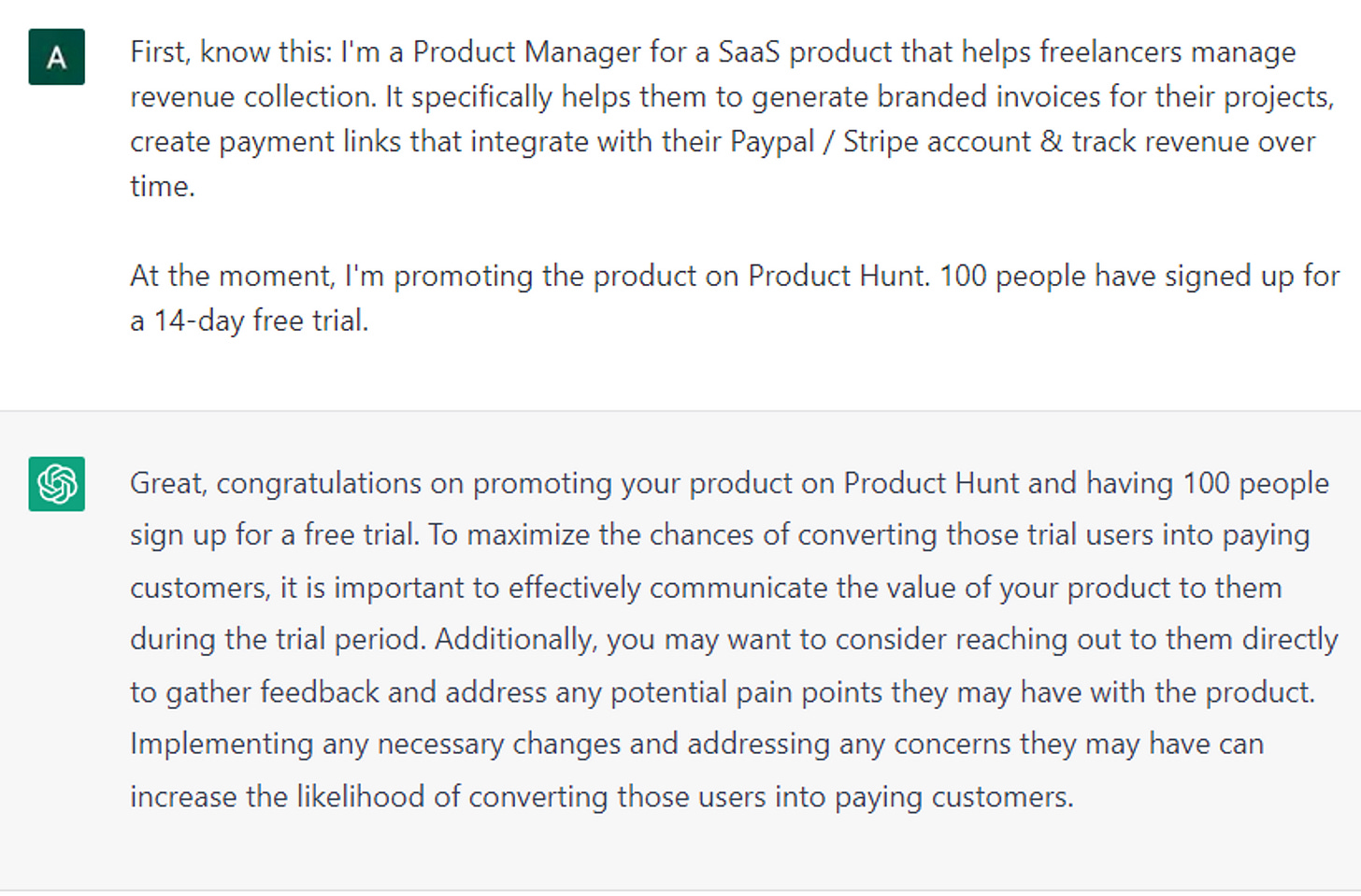





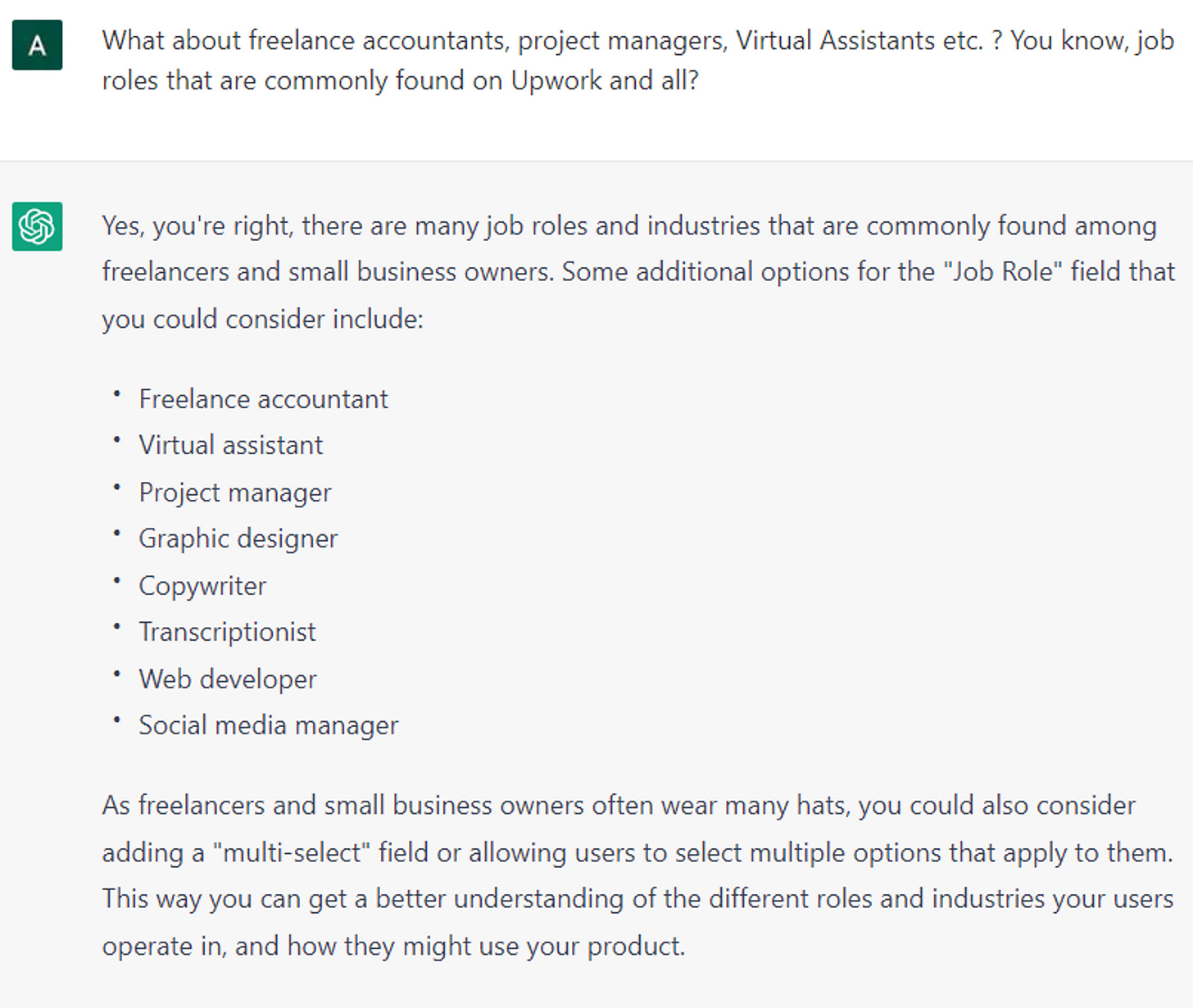





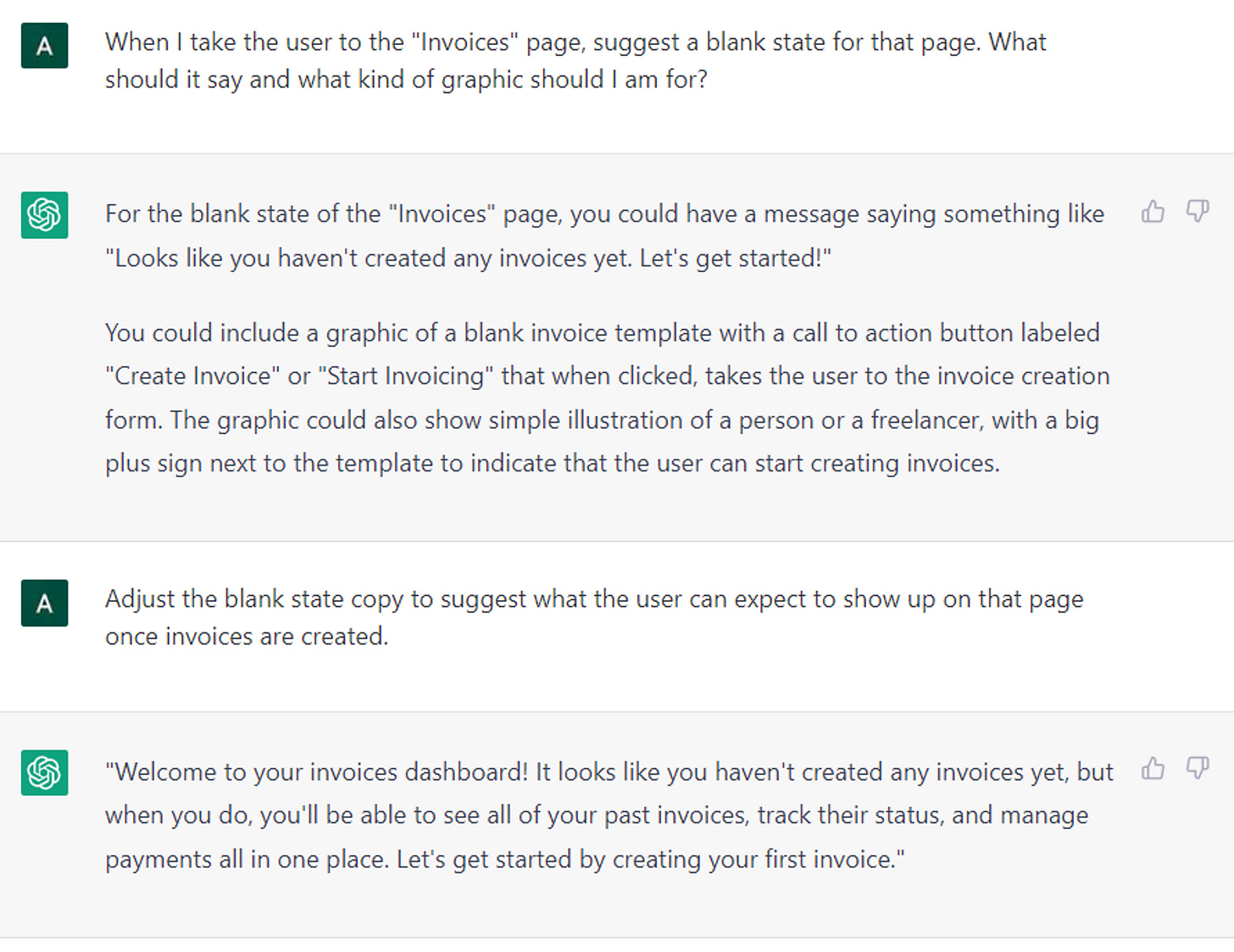

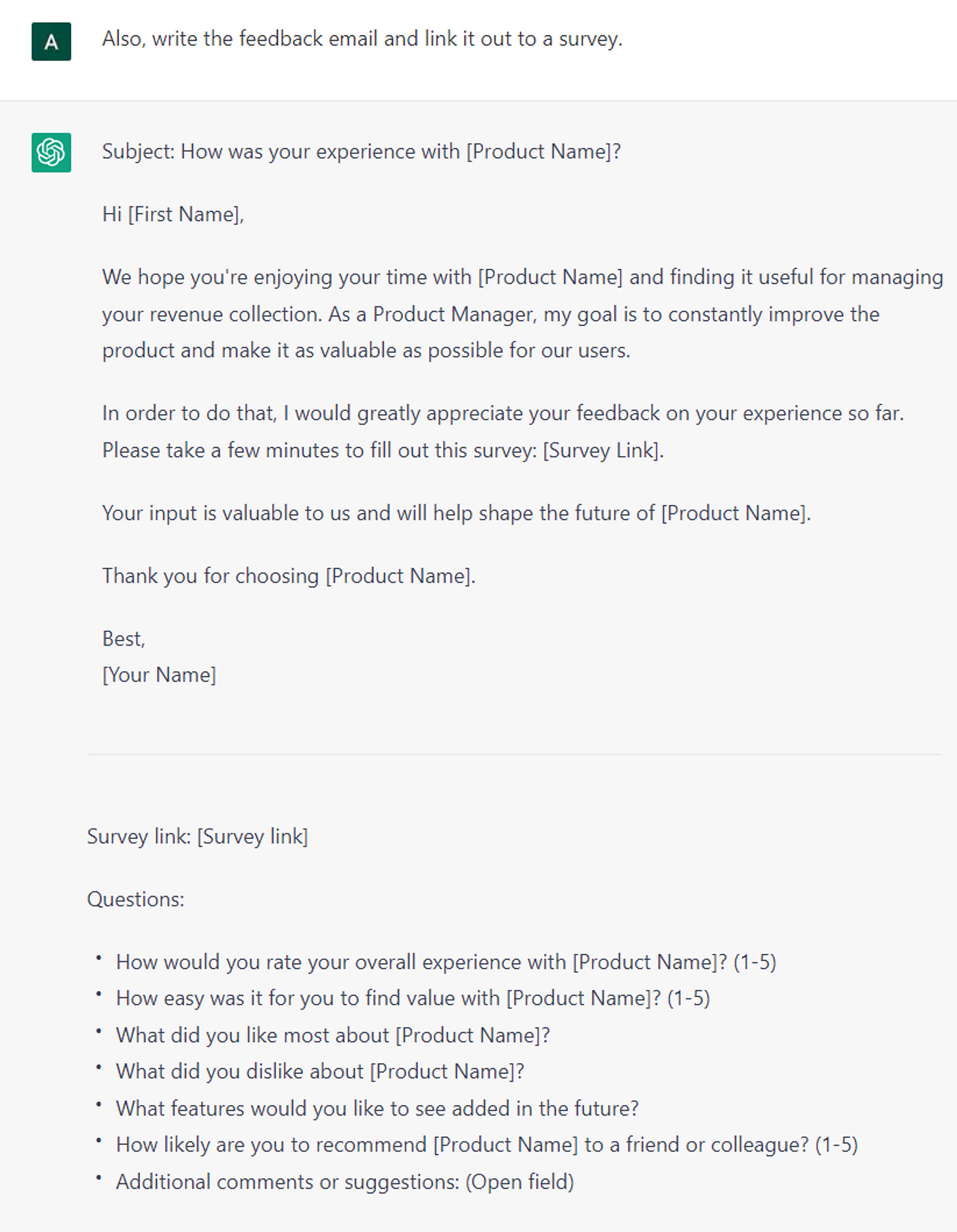




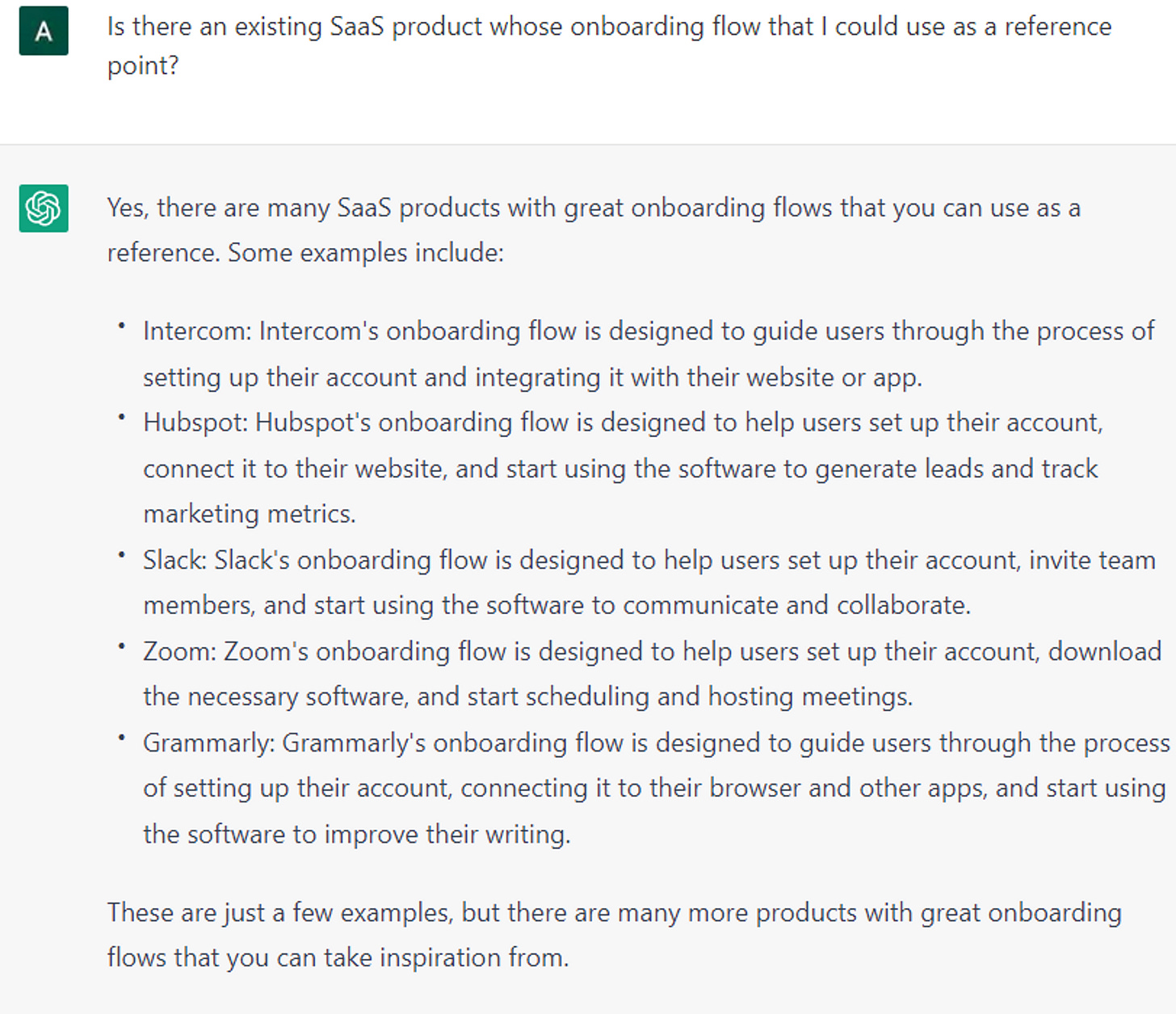
Great use-case. Thanks a lot!